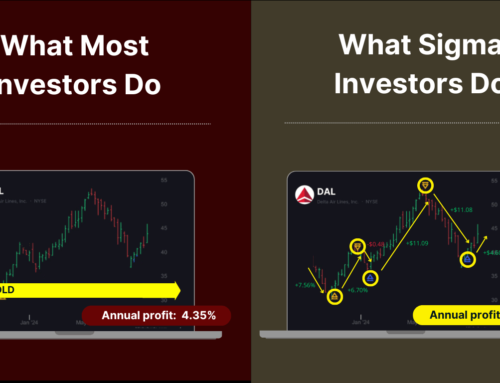In the ever-evolving financial markets, the right stock analysis tools can be your compass, guiding you through the complexities of market timing with ease and confidence. Whether you’re a novice dipping your toes into investing or seeking to refine your strategy, understanding and leveraging these tools can make a significant difference.
Understanding the Basics of Stock Market Timing
The concept of market timing is often shrouded in an aura of mystique, yet at its core, it’s about harnessing opportunities to buy or sell stocks based on future price predictions. While it may sound like a formidable task reserved for the seasoned professionals, modern stock analysis tools have democratized access, allowing beginners to glean insights into market trends with remarkable ease.
Moreover, grasping the basics of market timing involves an understanding of the market’s cyclical nature and the factors that drive stock prices—ranging from economic indicators to geopolitical events. This knowledge, when paired with the right tools, can foster a more strategic approach to investing, transcending the simplistic ‘buy low, sell high’ mantra.
Nevertheless, a word of caution is warranted. Market timing isn’t about rapid gains through frequent trades but about making informed decisions that align with your long-term investment goals. Patience and perseverance, therefore, become integral elements of a successful strategy.
The Role of Stock Analysis Tools in Market Timing
In the quest to master market timing, stock analysis tools serve as indispensable allies. They offer a window into the complex workings of financial markets, transforming overwhelming data into actionable insights. These tools range from technical analysis software that tracks price patterns to fundamental analysis platforms that evaluate a company’s intrinsic value.
It’s important to note, however, that these tools are not infallible predictors of future prices. Instead, they empower investors to assess probabilities, assisting in risk assessment and potential reward estimation. The true capability of these tools lies in their ability to provide a structured approach to analyzing stock data, thereby enabling smarter, more informed investment decisions.
Top Stock Analysis Tools for Beginners
For beginners, diving into the world of stock analysis can seem daunting. Fortunately, several tools have been specifically designed with ease of use in mind, making them ideal starting points. ‘Google Finance’ offers a streamlined, user-friendly interface to track stock performances and news. Meanwhile, platforms like ‘Yahoo! Finance’ and ‘Investing.com’ provide more in-depth analyses and real-time data, catering to those ready to take a deeper dive.
Additionally, for a more hands-on approach, ‘TradingView’ combines social networking with stock charting capabilities, allowing users to share insights and strategies. This peer-to-peer learning can be particularly beneficial for beginners looking to build a solid foundation in stock analysis.
Integrating Fundamental and Technical Analysis
To navigate the stock market more effectively, investors often combine fundamental and technical analysis—two distinct but complementary approaches. Fundamental analysis looks at a company’s financial health and industry prospects, aiming to determine its intrinsic value. Technical analysis, on the other hand, focuses on price movements and trading volumes to identify patterns and trends.
Integrating these approaches enhances market timing decisions, allowing investors to gauge not only a stock’s value but also the optimal timing for transactions based on market sentiment. This dual perspective equips investors with a more holistic viewpoint, crucial for navigating the volatility of stock markets.
Developing a Market Timing Strategy with Stock Analysis Tools
Developing a coherent market timing strategy involves more than just understanding individual tools; it necessitates a strategic framework that aligns with your investment goals and risk tolerance. This includes setting clear objectives, deciding on a trading frequency that suits your lifestyle, and determining how to allocate resources across different stocks or sectors.
Moreover, employing a disciplined approach to stock analysis and market timing can distinguish between success and failure. This involves consistently reviewing and adjusting your strategy in response to market dynamics or shifts in your financial goals, always with an eye toward long-term wealth creation.
Common Mistakes in Market Timing and How to Avoid Them
One of the most pervasive mistakes in market timing is acting on emotion rather than analysis. The allure of quick profits or the fear of losses can derail even the most well-considered strategies. To counter this, embedding discipline into your investment approach—such as setting stop-loss orders or taking regular reviews—is essential.
Additionally, an overreliance on one type of analysis or tool can limit perspective. Embracing a multi-faceted approach, combining various analytical methods and tools, can provide a more rounded view of the market, enhancing decision-making and mitigating risks.
Crafting Your Path with Stock Analysis Tools
As you embark on your journey with stock analysis tools, remember that the essence of market timing isn’t about perfection but informed decision-making. Tools and strategies discussed offer a starting point, a way to navigate the waters of the stock market with more confidence. Yet, the real art lies in your hands—melding analytical insight with your unique investment goals and risk tolerance to craft a path that’s truly your own.











